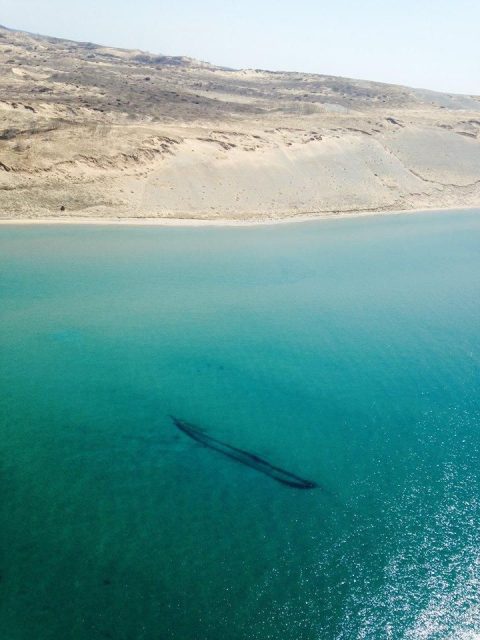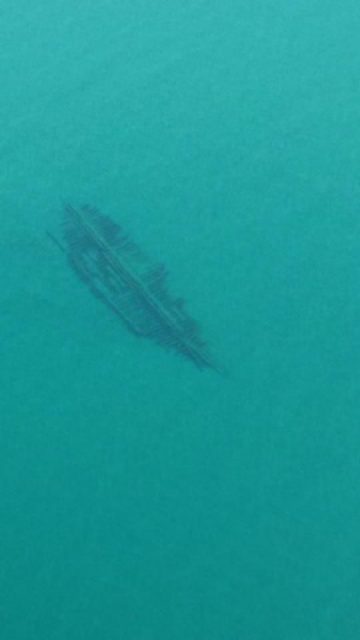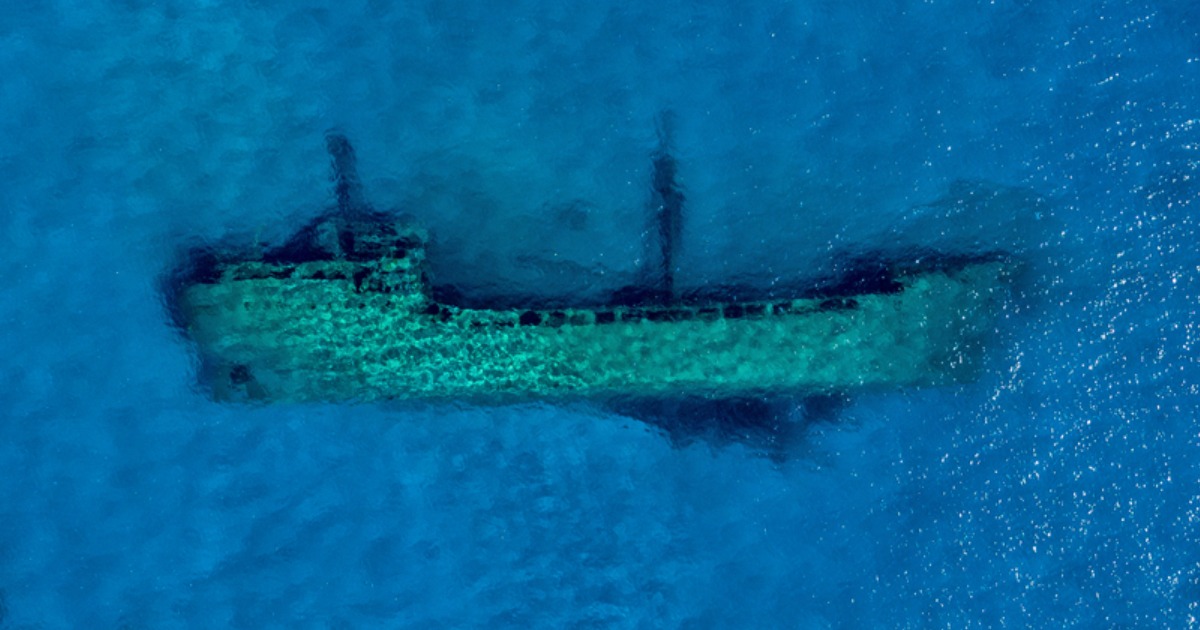Each spring on Lake Michigan, if you’re lucky, you’ll be able to see shipwrecks due to the incredibly clear springtime waters. Every winter, ice forms on the Great Lakes. That ice is often thick enough that the people who live on their shores can not only go ice fishing, but even ride snow mobiles across their surfaces. At the coming of spring, the ice melts, leaving the waters of some of the lakes especially clear for a while until warmer weather creates algae blooms and other events that reduce the water’s clarity.
In the early spring, the waters of Lake Michigan are currently so clear that aircraft flying over its surface are able to easily see shipwrecks deep below the surface of the water, according to an article in Smithsonian magazine.

Traverse City, Michigan, is home to a US Coast Guard air station, and the crew of one of its helicopter patrols took pictures of five of the area’s most notable wrecks during a routine patrol, then posted the images on its Facebook page. The pictures were taken over the Manitou Passage Underwater Preserve near Sleeping Bear Point in the northern part of the Lower Peninsula, an area which is known for its shipwreck diving. The area became part of a shipping route to facilitate the lumber industry, since the Manitou Islands offered a sheltered place for ships to find some shelter during storms.

Only two of the five wrecks the patrol team shot have been identified. One is known to be what’s left of the James McBride, a 121-foot brig that ran aground on October 19, 1857, during a storm after picking up a shipment of wood. Now the wreckage lies beneath five to fifteen feet of water, depending on the water level in the lake.

Another of the wrecks is that of the Rising Sun, a 133-foot long passenger steamer that ran aground on October 29, 1917, after a snowstorm. According to Leelenau.com, the ship was full of farmers bringing their harvests south for sale. When the ship ran aground, the passengers and crew were able to make their way to shore, looking for help among the residents of the area. The Coast Guard was altered, and a crew from the base took a sled boat to the crippled ship the morning. It was empty except for one elderly passenger, who had apparently slept through the entire incident. Today, the remains of the Rising Sun are under 6-12 feet of water.

Lieutenant Commander Charlie Wilson was one of the men on the patrol when the pictures were taken. He said it was fairly common to see parts of various wrecks in the lake during patrols, but it was not common to see as many as they did the day they shot the photos.
The clear blue water may be beautiful and inspire a desire to get in, the waters of Lake Michigan remain extremely cold in April, with the water temperature often still in the 30s. The frigid water temperatures and the fact that the lakes are fresh water are the reasons that the wrecks stay so well preserved, despite the fact that they have been down there for over a century.
It’s been estimated that there are 6,000 shipwrecks lying on the floors of the Great Lakes, including Lake Michigan, with around 1,500 located in Michigan waters. Even in the Manitou Passage Preserve there are a number of other wrecks that weren’t able to be photographed. The Preserve’s website offers a list of the wrecks, including the Congress, which is the deepest wreck, sitting under 165 feet of water. The Congress was built in 1867 and went down on October 4, 1904, after a fire started onboard, burning most of the stern.
Related Article: The 1829 “Serpent” Shipwreck Mystery on the Great Lakes Finally Solved
There are a number of other wrecks in the preserve, at a range of depths and difficulties for interested divers. Most of them have one thing in common: They sank in October or November, which is often a time of severe storms in the northern Great Lakes, and a perilous time for sailing on them, especially over a century ago.
